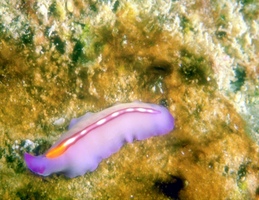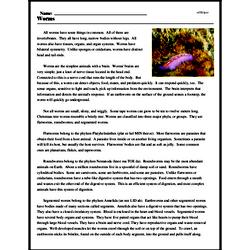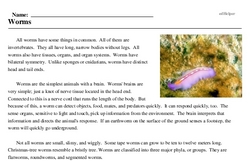Worms
All worms have some things in common. All of them are invertebrates. They all have long, narrow bodies without legs. All worms also have tissues, organs, and organ systems. Worms have bilateral symmetry. Unlike sponges or cnidarians, worms have distinct head and tail ends.
Worms are the simplest animals with a brain. Worms' brains are very simple; just a knot of nerve tissue located in the head end. Connected to this is a nerve cord that runs the length of the body. But because of this, a worm can detect objects, food, mates, and predators quickly. It can respond quickly, too. The sense organs, sensitive to light and touch, pick up information from the environment. The brain interprets that information and directs the animal's response. If an earthworm on the surface of the ground senses a footstep, the worm will quickly go underground.
Not all worms are small, slimy, and wiggly. Some tape worms can grow to be ten to twelve meters long. Christmas-tree worms resemble a bristly tree. Worms are classified into three major phyla, or groups. They are flatworms, roundworms, and segmented worms.




